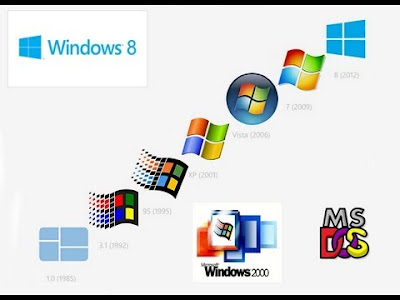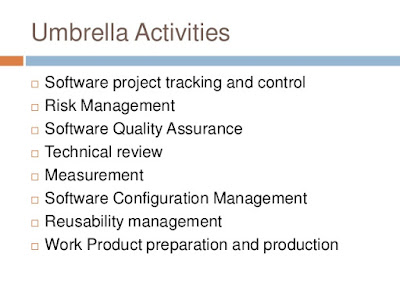Operating System History
1956, GM-NAA I/O: Developed by Robert L. Patrick of General Motors for use on their IBM 704 mainframe. This early OS was primarily designed to automatically switch to the next job once its current job was completed. It was used on about fourty IBM 704 mainframes.
1961, MCP (Master Control Program): Developed by Burroughs Corporations for their B5000 mainframe. MCP is still in used today by the Unisys ClearPath/MCP machines.
1966, DOS/360: After years of being strictly in the hardware business, IBM ventured into the OS. IBM developed a few unsuccessful mainframe Operating Systems until it finally released DOS/360 and its successors, which put IBM in the driver seat for both the hardware and OS industries.
1969, Unix: Developed by AT&T Bell Labs programmers Ken Thompson, Dennis Ritchie, Douglas McIlroy, and Joe Ossanna. It is written in C, which allows for easier modification, acceptance, and portability.
1973, CP/M (Control Program/Monitor (later re-purposed as “Control Program for Microcomputers”): Developed by Greg Kildall as a side project for his company Digital Research. CP/M became a popular OS in the 1970′s. It had many applications developed for it, including WordStar and dBASE. In fact, IBM originally wanted CP/M for its new Personal Computers, but later selected MS-DOS when a deal could not be reached.
1977, BSD (Berkeley Software Distribution): Developed by the University of California, Berkeley. BSD is a Unix variant based on early versions of Unix from Bell Labs.
1981, MS-DOS: Developed by Microsoft for the IBM PC’s. It was the first widely available Operating Systems for home users. In 1985, Microsoft released Microsoft Windows, which popularized the Operating System even more. Microsoft Windows allowed users a graphical user interface (GUI), which rapidly spread Microsoft’s product.
1982, SunOS: Developed by Sun Microsystems, SunOS was based on BSD. It was a very popular Unix variant.
1984, Mac OS: Developed by Apple Computer, Inc for their new product, the Macintosh home PC. The Macintosh was widely advertised (the famous 1984 commercial is available below). Mac OS was the first OS with a GUI built-in. This lead to a very stable OS, as well as wide acceptance due to its ease of use.
1987, OS/2: Developed by a joint venture of IBM and Microsoft. Though the OS was heavily marketed, it did not pick up in popularity.
1991, Linux: Developed by Linus Torvalds as a free Unix variant. Linux today is a very largely contributed Open Source project that plays a very prominant role in today’s server industry.
1992, Sun Solaris: Developed by Sun Microsystems, Solaris is a widely used Unix variant, and partially developed based on Sun’s SunOS.
1993, Windows NT: Developed by Microsoft as a high-end server Operating System, the NT code became the basis for Operating Systems to this day. NT was primarily used on computers used as servers to counter the Unix dominance in the arena.
1995, Windows95: Developed by Microsoft, it was the first Microsoft Operating system to have a graphical user interface built into it. It was tremendously marketed (successfully) and quickly swept across the country and the globe. Below is one of Microsoft’s popular commercials, featuring the Rolling Stones with “Start Me Up”, drawing attention to Microsoft’s “Start” button, which to this day is a dominant feature of their Operating Systems.
1997, JavaOS: Developed by Sun Microsystems, JavaOS was developed primarily using the Java programming language. The OS was created to be installed on any device, including PC’s.
1998, Windows98: Developed by Microsoft, Windows 98 was the next iteration of the Microsoft Windows95 Operating System.
1999, MacOS X Server 1.0: Developed by Apple Computer, Inc., MacOS X Server 1.0 was a precursor to Apple’s MacOS X desktop version, which replaced it in 2001. MacOS X Server 1.0 was developed for Apple’s popular Macintosh PC.
2000, Windows 2000: Developed by Microsoft, Windows 2000 was a much improved Operating System over Windows 98. It was developed from a dramatically different code base. It was targetted for business oriented uses.
2000, Windows ME: Developed by Microsoft, Windows ME (also called Windows Millenium) was a rather unsuccessful new version of Windows 98 and had a short shelf life. It was released just seven months after Windows 2000 and just a year before Windows XP.
2001, MacOS X Version 10.0: Developed by Apple Computer, Inc., MacOS X Version 10.0 dramatically changed the user interface for Apple’s Macinstosh users.
2001, Windows XP: Developed by Microsoft, Windows XP was an enhanced version of Windows 2000 code base. XP became widely popular and is used extensively today, despite the release of newer versions of Windows.
2003, Windows Server 2003: Developed by Microsoft as an improved version of their NT OS.
2007, Windows Vista: Developed by Microsoft, Windows Vista had been slow in taking off.
2008, Windows Server 2008: Developed by Microsoft as an upgrade to Windows Server 2003.
2009, Windows 7: Developed by Microsoft to replace Vista, “Win7″ is currently used by over 50% of internet users.
2012, Windows 8: Developed by Microsoft to replace Win7, “Win8″ was just released October 26th, 2012, the same date as its Surface product.



A very awesome blog post. We are really grateful for your blog post. You will find a lot of approaches after visiting your post. microsoft office key
ReplyDeletePretty good post. I just stumbled upon your blog and wanted to say that I have really enjoyed reading your blog posts. Any way I'll be subscribing to your feed and I hope you post again soon. Big thanks for the useful info. All in one automated marketing platform
ReplyDelete